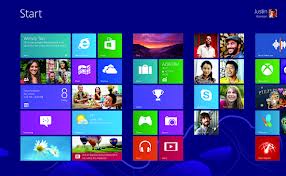WOW…where does the time go? I have no excuses for being AWOL. I do, however, have tons and tons of ideas for articles…many of which can be attributed to the fact that my laptop died on me last week…Yup…done…over…kaput.
As an aside (skip over this paragraph to the next paragraph if you’re interested in the topic of this article and not my ramblings), my laptop was about a 18 months old. Sounds ‘young’ to many people, but it was an inexpensive laptop (cost in August 2011 about $450), and I used it ALL THE TIME…basically, I wore out the keyboard. Replacing the keyboard (yes, I got brave enough to try that before deciding to retire it to the big laptop parking lot in the sky) didn’t work. So, after consulting with some people who are better with hardware than I am, I decided to just bite the bullet and purchase a new laptop. After all, if I can’t type, I can’t service my clients! So I headed off to Staples and bought a Lenovo Ideapad for about $550. Not the cheapest laptop around, but certainly not the most expensive. So far, I’m OK with it. Its nice enough (geez, it has an Intel i5 processor, 8GB of RAM, and a 750GB hard drive) and the keys actually type what I ask them to – what more could you want?! It’ll take me a while to get used to the new touch/feel of the keyboard (and a smaller-than-standard numeric keypad), and a slightly smaller screen (15″ vs 17″ on my old laptop). BUT, the biggest challenge is getting used to Windows 8 – so be prepared for some upcoming articles on it. Once I found the desktop, I was much happier.
Anyway, back to the matter at hand…(those of you who skipped can tune back in here)…when one purchases new electronics (virtually any kind of electronics), one turns it on for the first time and are confronted with…all kinds of JUNK! “Bloatware” is a common term. Your computer comes pre-loaded with all kinds of programs that you may never need or want…but how do you decide what’s OK to delete and what’s not?
Aha! I found a great little tool that helps tremendously. It is called “Should I Remove It” and can be downloaded from ShouldIRemoveIt.com. Simply go to the website and press the free download button:

Once the file has downloaded, double-click on the file and install it on your computer (yes, you actually WANT this software!). Open up the newly installed piece of software and you’ll see this screen:
The bar on the right indicates the likelihood that you should uninstall a particular piece of software. Click on the name of one of the installed programs, and you can choose to investigate that program further or uninstall it – right from that screen.
It’s a pretty safe bet that if no one else has uninstalled a program that it’s an important one – but not always – so check it out and see. For instance, if your computer comes pre-installed with Microsoft Office, but you don’t want to use it, then it’s OK to uninstall that, as well, even though many people wouldn’t consider it ‘bloatware’…it is for you.
Anyway, the ShouldIRemoveIt rankings go from red (most everyone removes it) to green (only some people remove it). Check each one out. Decide for yourself, but be sure to read the ‘What Is It’ area before uninstalling those programs that aren’t clearly ‘in the red zone’. You don’t want to uninstall something ‘important’.
I found some of the statistics on the ShouldIRemoveIt.com website to be interesting. Toshiba seems to install more bloatware than other manufacturers (Acer, the least). The most actively removed program by this tool (at the time of this writing) is the Ask.com toolbar (yes, I uninstall that one whenever it creeps onto my computer).
NOTE: You can run this tool on an old computer, as well, to help clean it up. Once you’ve removed the programs, I’d recommend running something like Disk Cleanup, Defrag or CCleaner to clear any cobwebs from your computer’s brain!














































